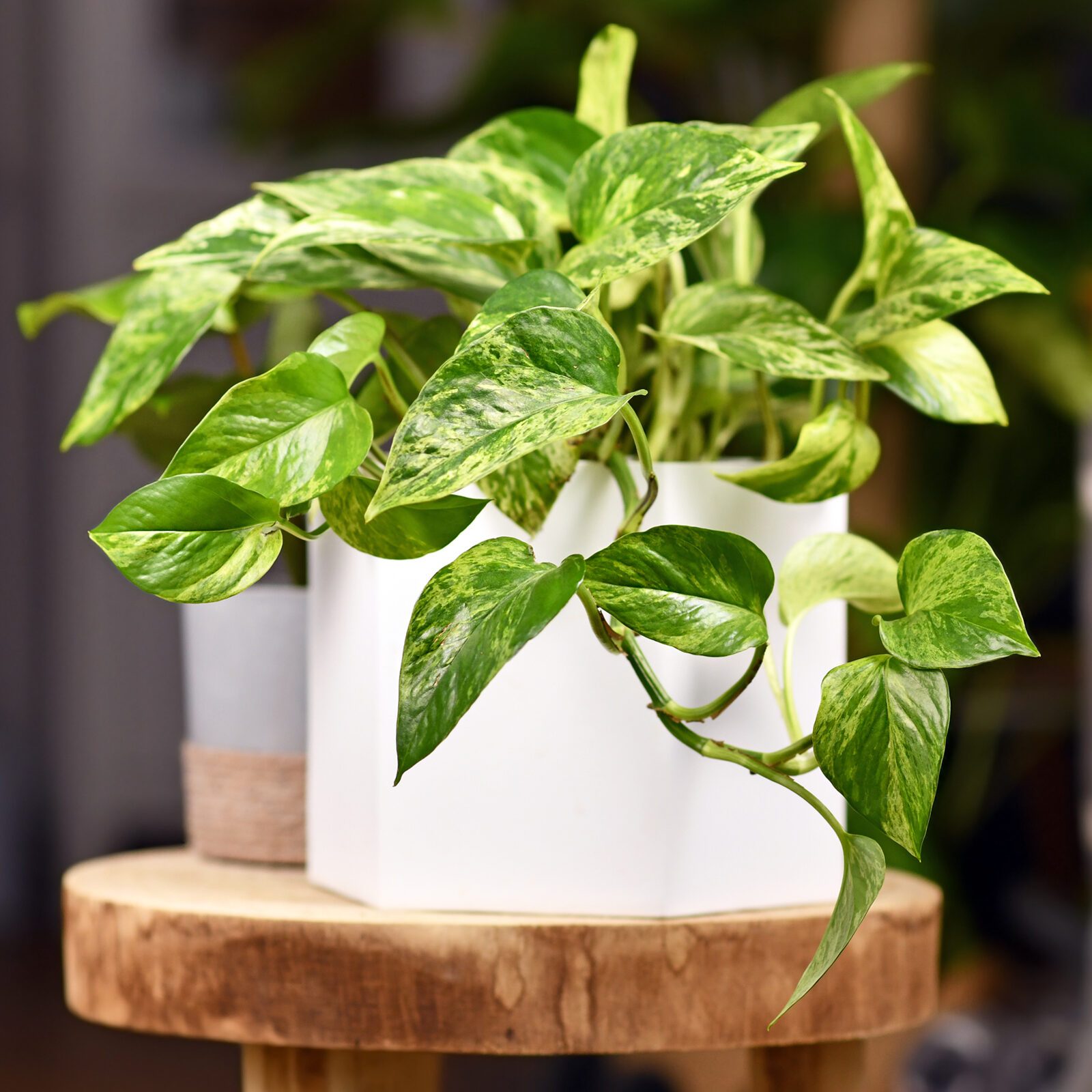Learn how to make a pothos plant thrive in your home. Plus, what it means when the leaves turn yellow and how to propagate pothos.

Pothos Plant Care and Growing Tips

How to Grow Pothos Plants

- Common name: Pothos or devil’s ivy
- Scientific name: Epipremnum aureum
- Light needs: Bright, indirect light but tolerates low light
- Water needs: Allow top inches of soil to dry between watering
- Size: Grows 8 to 10 feet as horizontal ground cover and 40- to 60-feet long as a vine.
For anyone who has ever thought they couldn’t provide the right care for a happy, healthy houseplant, pothos are here to prove them wrong. “I think everyone should consider owning at least one,” says Nick Reuland, the owner of Milwaukee, Wisconsin-based plant shop Riverwest Grown. “They tolerate a wide range of growing conditions and they’re very forgiving if you forget to water them. Also, they just look really nice.”
Let the vines cascade down over the edge of a hanging basket or plant it in a pot — but make sure whatever container you choose has drainage holes to avoid soggy soil.
Check out more common houseplants that are popular for a reason.
Popular Varieties

Golden pothos is the most common variety, but there are plenty of others to explore, too. Go with Neon pothos for a lemon-lime pop or try Marble Queen for a heavily variegated green-and-white look. “One of my favorite newer varieties is Lemon Meringue,” Nick says. “The leaves have a green center with yellow edges.”
Learn how to grow and care for a spider plant.
Difference Between Pothos and Philodendron

Philodendron and pothos are in the same family (Araceae) and look quite similar. One way to tell the difference is that new philodendron leaves grow out of a protective sheath called a cataphyll that turns brown and drops off. Pothos leaves don’t. Nick also says, “Philodendrons have leaves that are shaped like the spade on a playing card and come to a point. Pothos leaves are more heart-shaped and have a waxy, shiny appearance.”
When to Repot Pothos

Nick advises that the best time to repot pothos is roughly every two years. “Many people repot their plants too often and the plants suffer,” he says. “A good way to tell it’s time to repot is when the roots start to come out of the bottom of the pot.”
When it comes to repotting, the general rule of thumb is to select a slightly larger container — about 2 inches wider in diameter. “Don’t be tempted to put your pothos in a much larger pot, thinking you won’t have to repot it for a long time,” Nick says. “The roots need to fill out the pot before the plant will start to grow. Too big of a pot choice can lead to root rot.”
How to Get Rid of Mealybugs on Pothos
Repotting is a great opportunity to check your plant for problems. Pothos tends to be relatively free of pests, but can be prone to mealybugs, which feed on and severely weaken plants, sometimes killing them.
“Mealybugs look like small, white pieces of fluff on the underside of the leaves or crevices of the plant,” Nick says. “Mealybugs can be treated by spraying 70% rubbing alcohol and then removing them with a Q-tip, including the dead ones. This should be done at least twice followed by a systemic pesticide treatment for the soil.”
How to Propagate and Prune Pothos
Early spring is the best time to prune and fertilize your pothos. “Cutting it back will cause the plant to produce side branches and look more full,” Nick says.
Instead of tossing your cutting, you can also use it to propagate a new plant by putting it in water. “Make sure there is at least one node under water and one set of leaves above water,” Nick suggests. “Once the clipping has a big root and some small roots coming off the big root, it’s time to pot it up. They make great gifts for friends, neighbors, or coworkers.”
Pothos Leaves Turning Yellow
There are many reasons a plant’s leaves might yellow, but Nick says that when he sees a pothos with yellow leaves, he usually suspects a combination of overwatering and insufficient light. He advises, “If multiple new leaves turn yellow, it’s best to take your plant out of the pot, remove any rotted roots and spray the remaining roots with hydrogen peroxide. Replace the soil with a well-draining potting mix.”
He also suggests moving the plant to a spot where it’ll receive better light but notes that direct sun should be avoided.
Are Pothos Plants Toxic to Cats and Dogs?
Yes, pothos are toxic to cats and dogs if eaten, because they contain calcium oxalate. Symptoms include mouth irritation, difficulty swallowing and excessive drooling. Although it’s unlikely to be fatal, stay on the safe side and keep these plants out of reach from curious pets.
About the Expert
Nick Reuland is a long-time plant enthusiast and the owner of Riverwest Grown, a brick and mortar plant shop in Milwaukee, Wisconsin.
Sources
- ASPCA – Golden pothos
- North Carolina Cooperative Extension – Epipremnum aureum
- Wisconsin Horticulture Division of Extension – Pothos, Epipremmum aureum
- PennState Extension – Pothos as a Houseplant
- Almanac.com – How to Care for Pothos Plants
- Missouri Botanical Garden – Epipremnum aureum




















